Bikepacking in the height of summer in the Himalayas isn’t for the faint of heart, and the lead-up to this trip hadn’t set me off on the best footing.
All of us lost our jobs at Newshub in February, but had to continue doing those jobs for four months until our jobs were actually terminated, which meant quite a long period of carrying the weight of each other’s anxiety and uncertainty about what the future held. Not to mention the mental load of coming to terms with the end of a news operation as old as I am.
Four days after the big End of Newshub party, Cael and I were on a plane to Singapore - Delhi - Leh and in an utterly unsurprising development, I got a sinus infection.
The busy months leading up to leaving New Zealand also lacked structure and I’d found my love for running had waned. So: sinus infection, altitude adjustment, and a plan to “get fit on the road” - you might say put me at a disadvantage heading into a physical challenge of some magnitude.
With this in mind, Cael had mapped three routes through the Zanskar mountains - one labelled “maybe chillest way through Zanskar” which only had around 7000m of vertical gain, as opposed to the other two options which had closer to 8500m.
After some discussion with Bablu’s brother about the road surface quality up to Singe La pass (“only 3km steep, then very easy”, according to a rotund man who only drives a motor vehicle up said roads) I decided I felt up to the route which took us over both Singe La and Sirsir La passes. We were only here once, and I was determined not to cop out on the best bits.
We wound our way up the first switchbacks from Nyerak village which actually were fairly “easy” because they were sealed. One of Cael’s pedals came loose and thankfully he was able to reset the thread by screwing it in from the rear side of the crank.
We ate lunch at the saddle then rode around a wide valley, opting to stop and stay at a small village called Yulchung to break up the climbing.
Unfortunately for our altitude gains, most of the village sat about 100m below where we currently were, down a steep dirt road through paddocks where bunches of small goats grazed.
Unable to identify any guesthouses, we knocked on the door of one home where we could see children playing inside. This, it turned out, was a guesthouse, though its construction was incomplete. Our host Dolma lead us up some steep stone stairs, across a construction site and into an upstairs room with a breathtaking view of the mountains, so close we have to crouch down to see their tops through the windows.
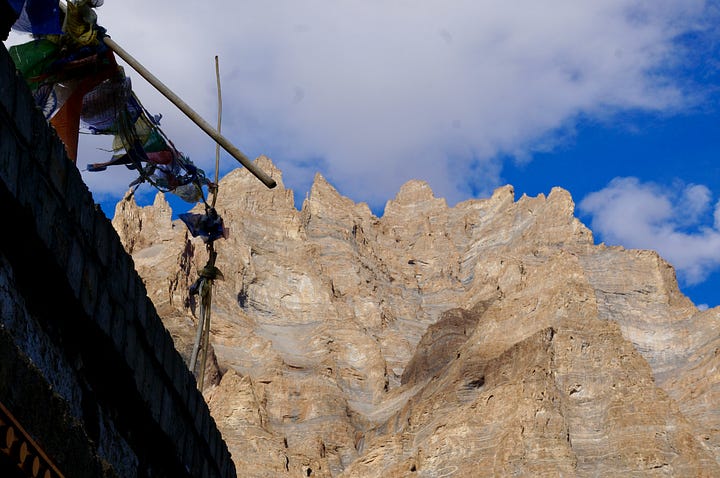
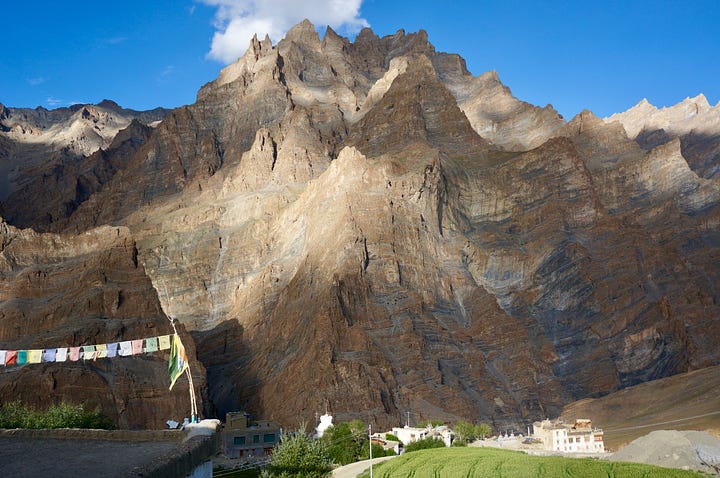
We wash in a hose in the garden that’s directed from a spring, and eat the vegetables, rice ands dhal Dolma serves while conversing in broken English and hand gestures. She’s got two kids in middle school and a 10-month-old baby and their education is very important. She asks us about the subjects taught at school at our homes. Unlike other (mostly male) locals we’ve spoken to who confidently speak limited English but don’t seem to listen, her English is more stilted but her comprehension quite high.
Cael asks her if the impressive mountains above her home have names, she says they do not. The landscapes, remarkable to us, are ordinary to locals here, valuable more for their ability to lure tourists and therefore income.
The following morning Dolma’s family is going to Leh for the day so they give us a lift up to where the road branches off to Lingshed. We then ride through the hot sun, passing clusters of road workers. Peeling off the road to take photos, we dodge piles of their poo among the rocks. It is a rugged life for those guys.
I can feel the altitude tightening my chest, restricting my diaphragm’s expansion as we near Singe La - a pass sitting at just under 5000m.
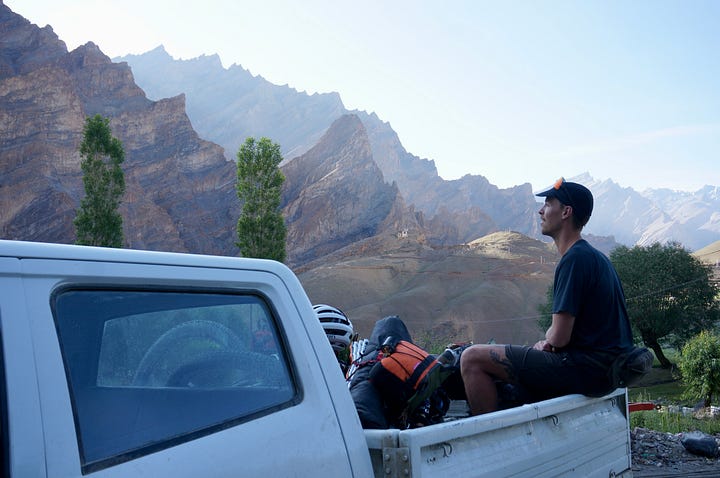
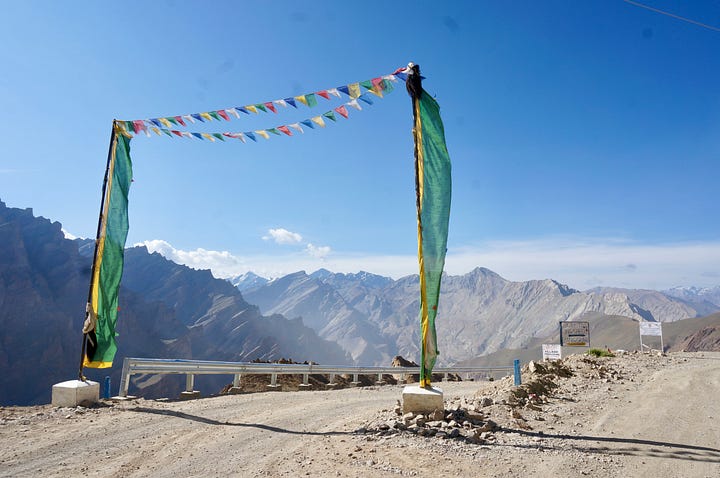
At the top, we make lunch in the lee of a mud hut festooned with prayer flags, and after some time a group of horse shepherds stops for a rest, their animals clustered with heads bowed and eyes closed.
The ride down from Singe La is long and invigorating, with the black, teeth-like outcrops towering above the pass at our backs, while walls of orange sedimentary rock reveal new depths and swirling patterns as we pedal by. Our first yaks appear, grazing on the summer grass. There aren’t as many as I’d expected to see. Climate change is causing trouble for these magnificent animals and the high alpine pastoralists who farm them. The yak can endure temperatures of below 30, but they struggle when the temperature rises to 12-13 degrees. People we’ve talked to throughout Ladakh have talked about the shifting weather patterns and intensifying heat.
That heat is beginning to have an effect on me too, where my fingers poke out of my gloves the skin is burning and painful. I can’t understand why it was so severe, until Cael suggests the doxycycline I’ve been taking for the sinus infection. A known side effect is photosensitivity, and I curse my stupidity for failing to consider it.
I’d been so careful to lather exposed places in sun block but those tiny patches of skin had been overlooked, and the hours of UV rays had fried them.
We ride the final stretch into the village Fotoksar, which is tucked under towers of orange rock and dark fans of sediment that look like they could envelope the place in a modest fall of rain.
At our homestay are two American geologists accompanied by a local geologist. They’re taking samples of this zone to better understand the collision between the Indian plate with Asia and how the rocks have moved since then. They tell us enthusiastically that we’re right on the boundary of the collision, hence the drastically different rock on either side of the valley.
They give us some burn ointment for my hands which are now throbbing painfully. Cael wraps them in plastic to keep the antiseptic cream in place, rendering me handsfree with the squat toilet, which also requires his assistance to get my pants down and up.
The following morning I bundle my hands into my winter riding gloves for complete coverage and we wind our way up the valley, past blooming wildflowers in many shades of blue and purple.
The climb up to Sirsir La is quite benevolent in its gradient, and we stop once for some energy gels and a Pic’s peanut butter sachet.
At the pass, a group of Germans on their way to go trekking admire our made-in-New Zealand bamboo Passchier handlebars, then we drop into the next valley, twisting and turning down and down past fangs of rock protruding from the Earth as if punched through skin.
As we lose altitude the valley narrows and before long we’re hemmed in by tall walls on either side in maroon, grey, orange and even green. It’s astonishing and even more so for the fact we had no idea it was coming, thinking the most striking landscapes - the high passes - were already behind us.
This alpine desert is undoubtedly one of the most hostile environments on Earth. My poor hands wear the reddened calluses to prove it, but the memories of the hauntingly beautiful place will stay much longer.




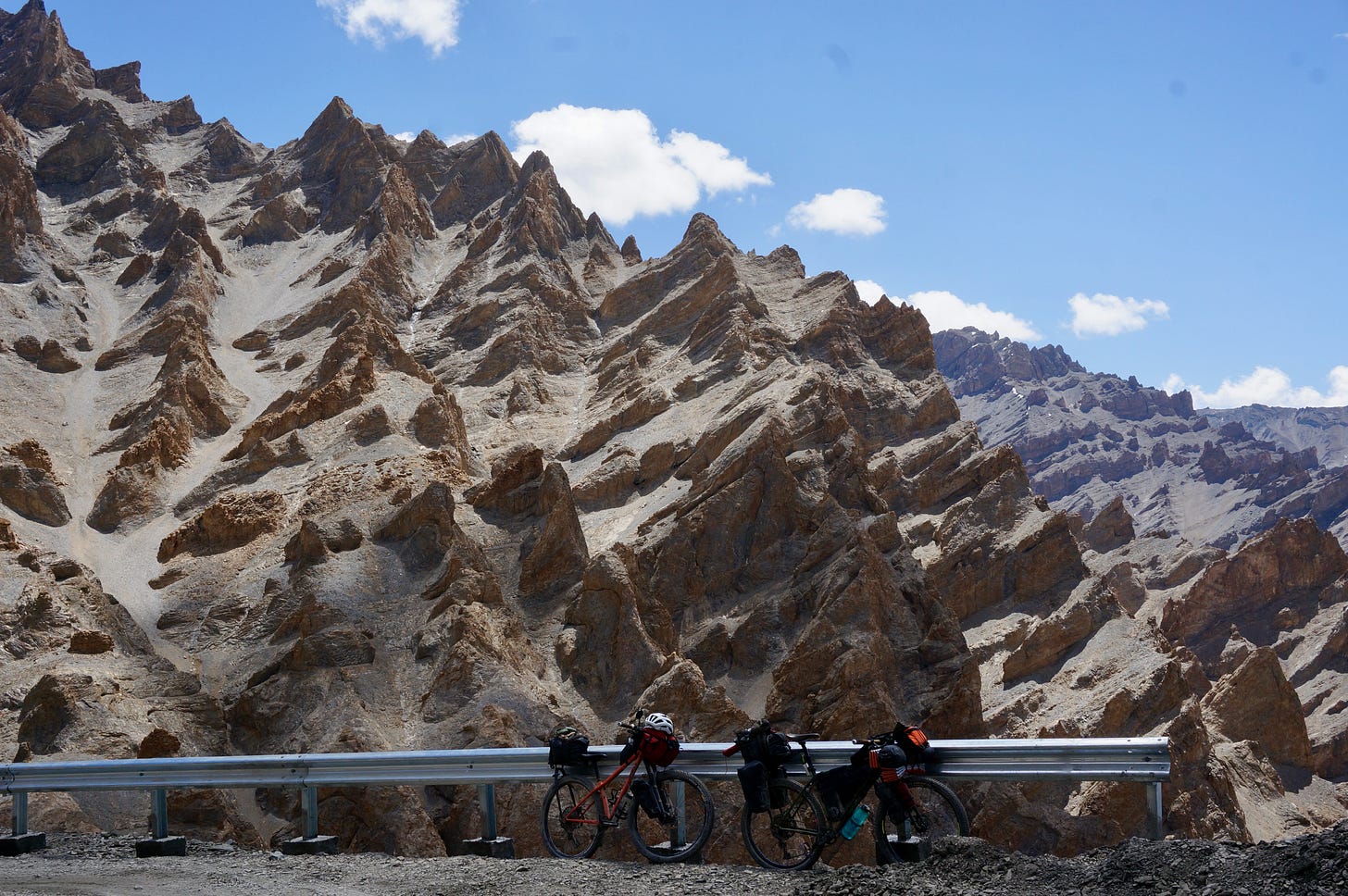
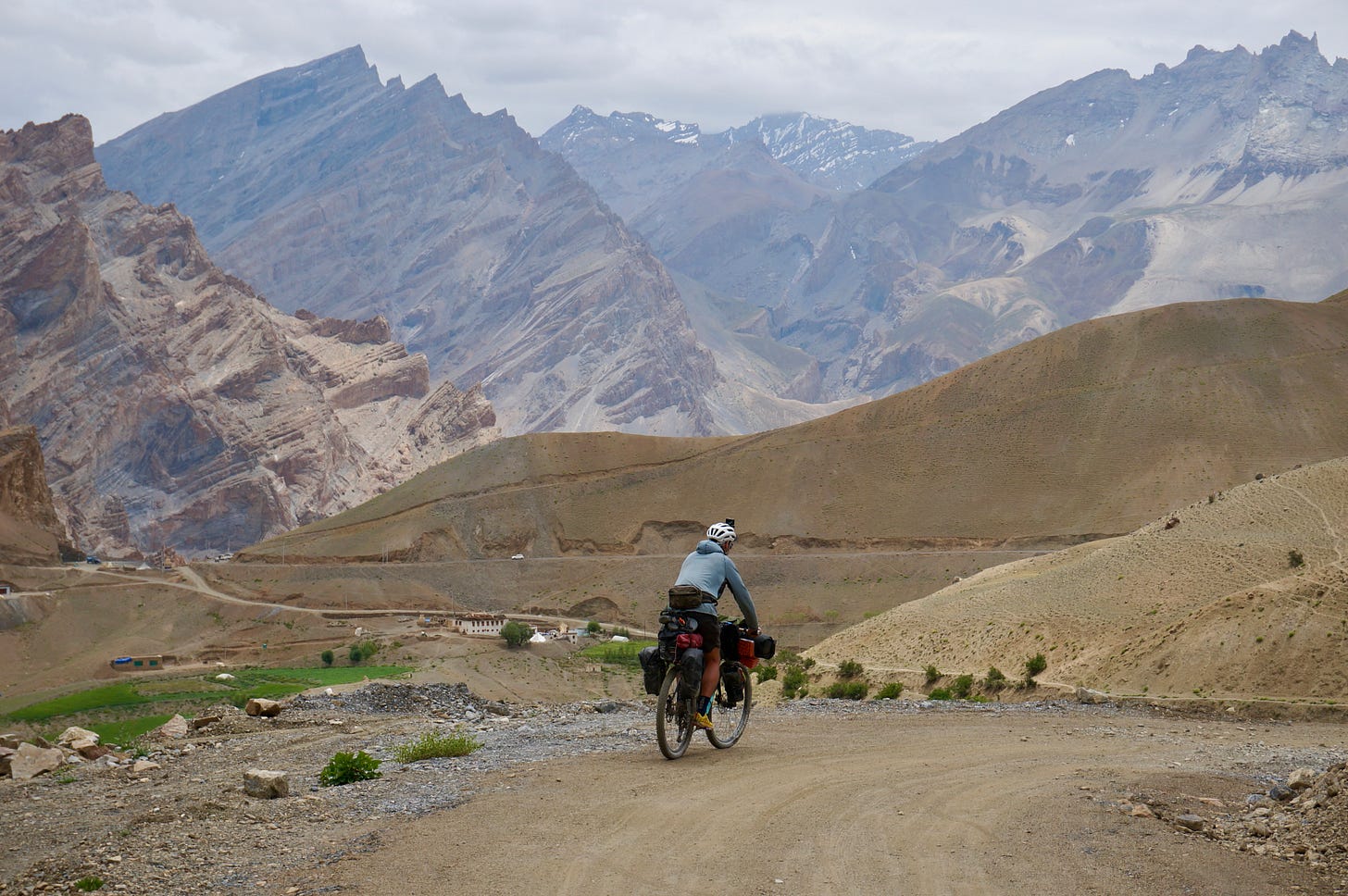
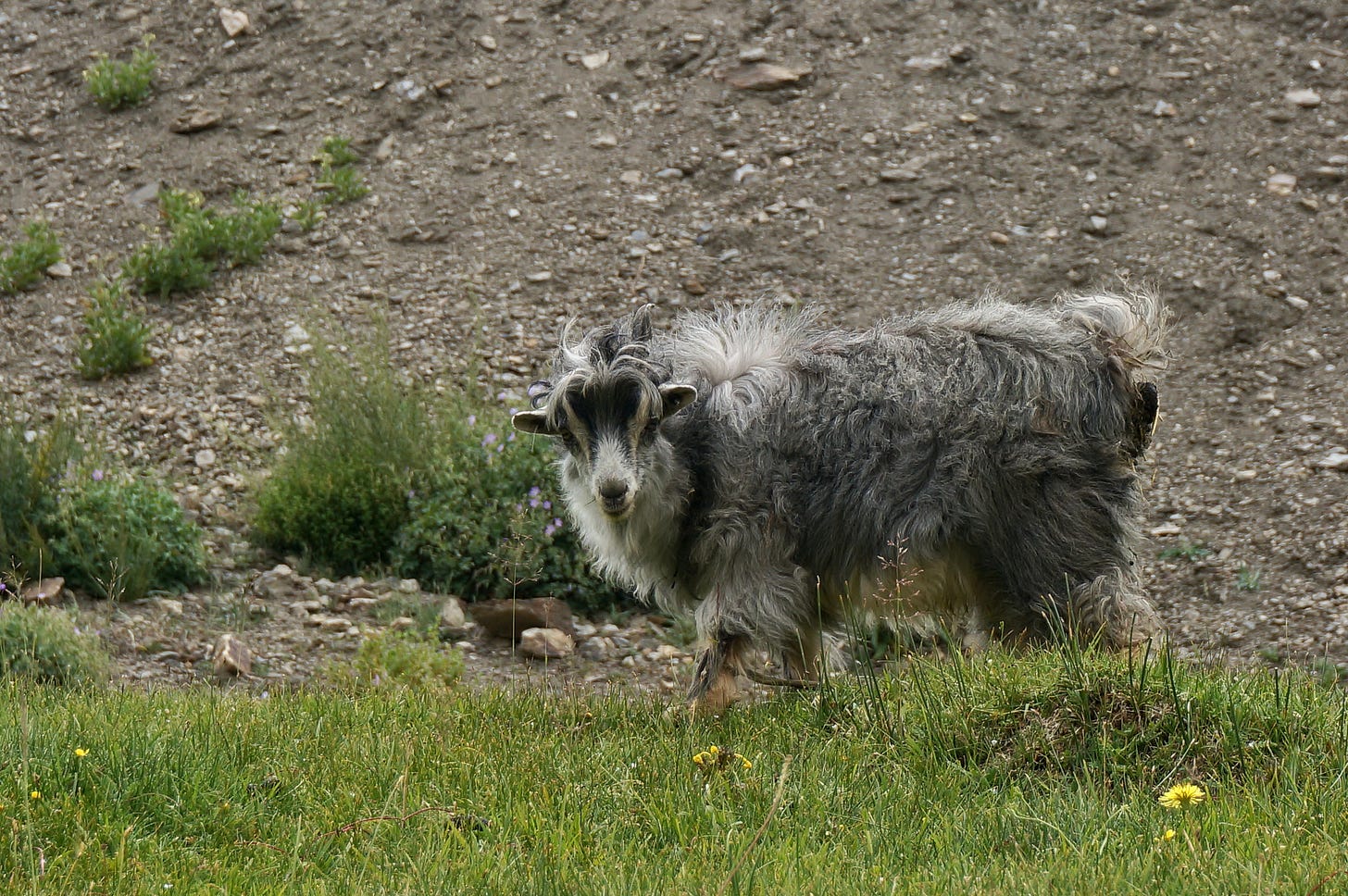
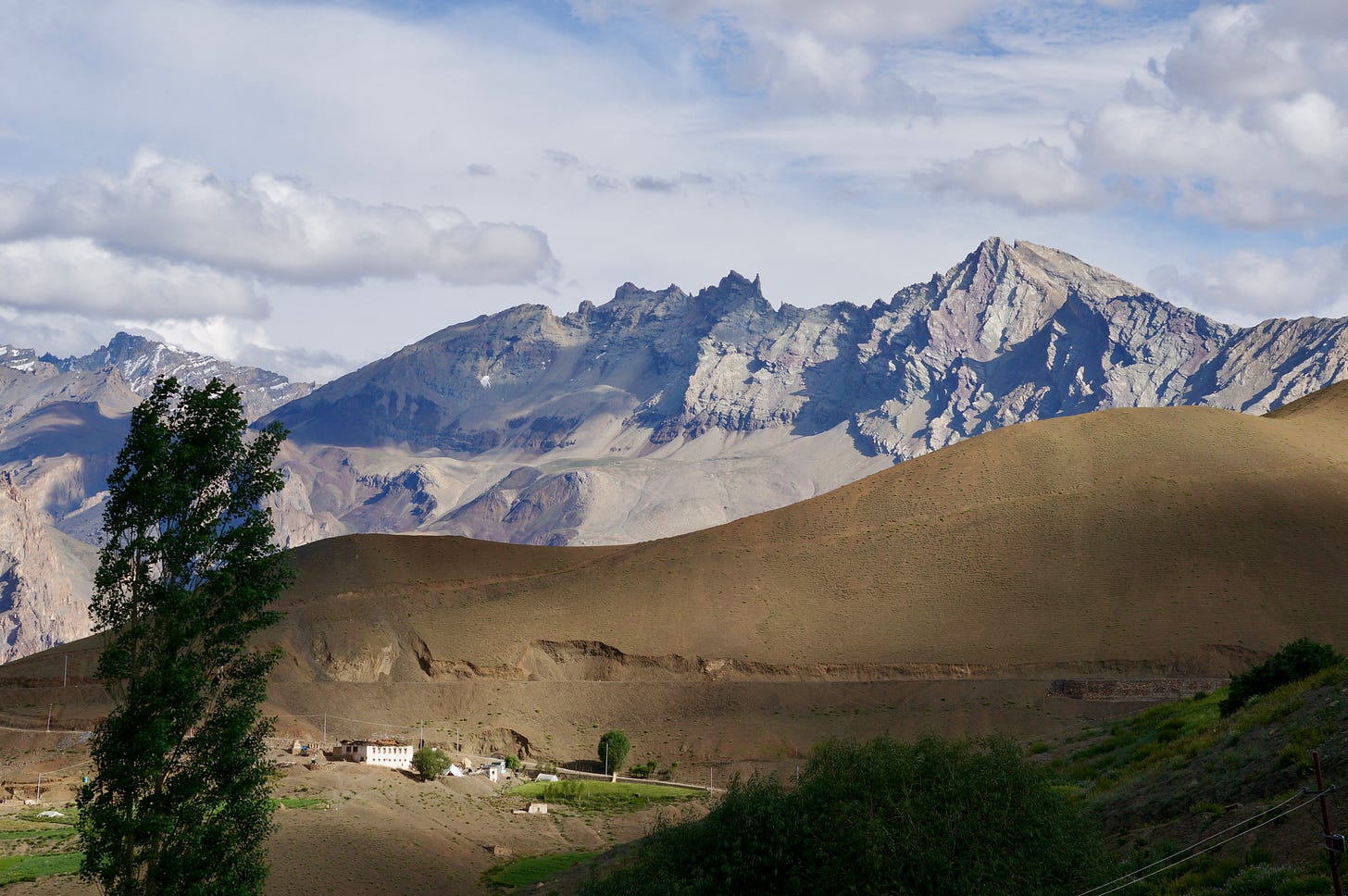
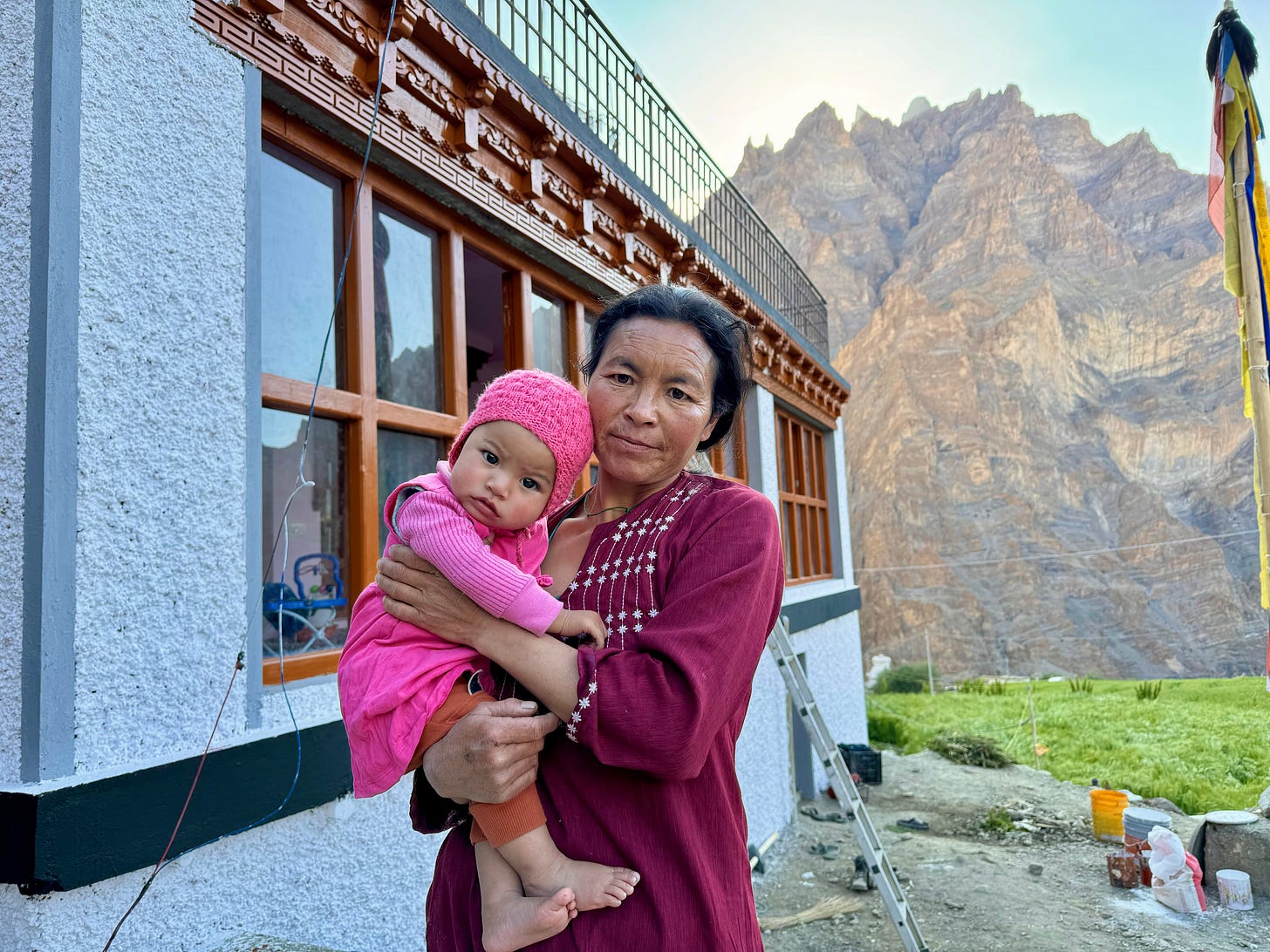
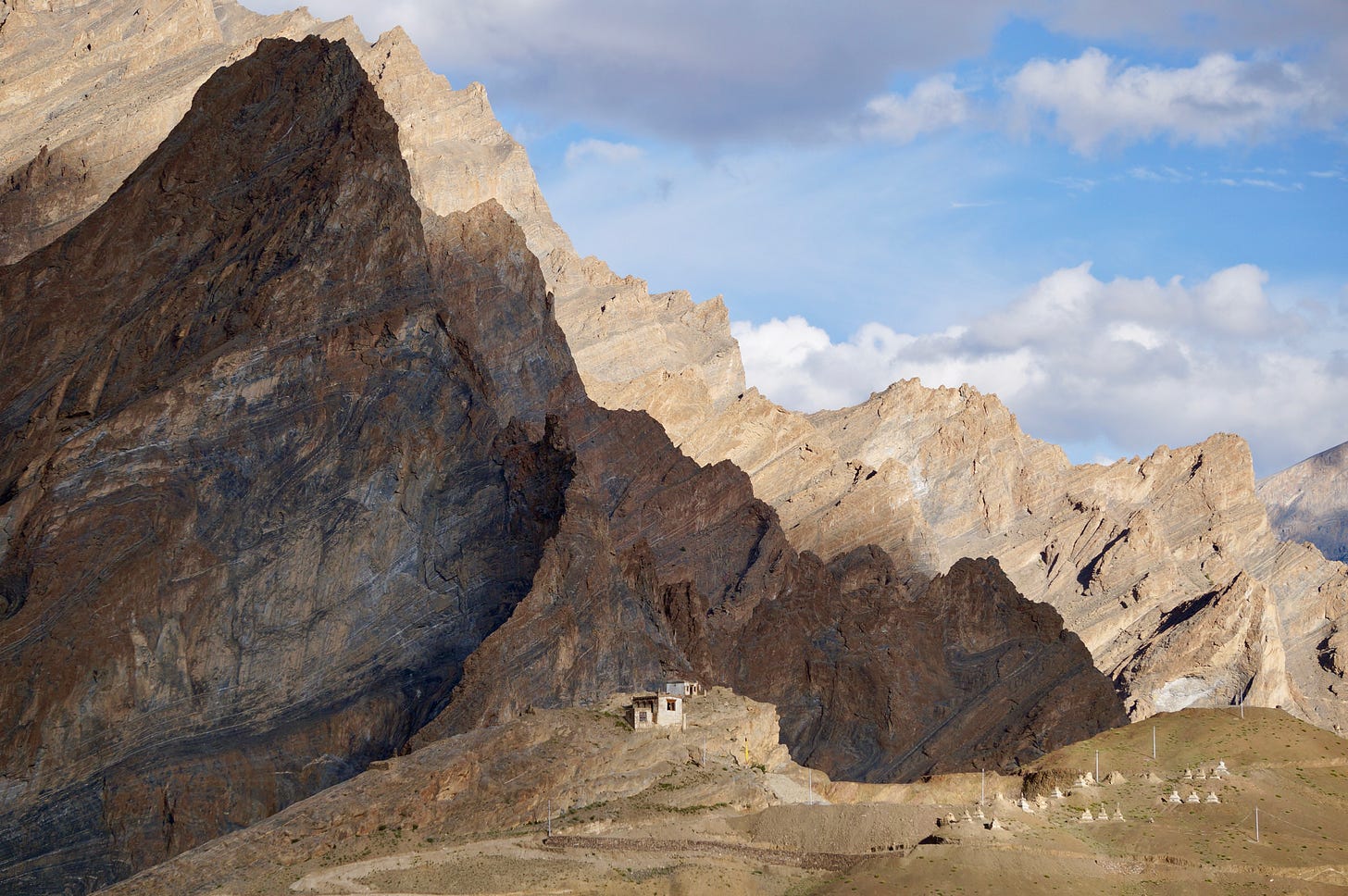
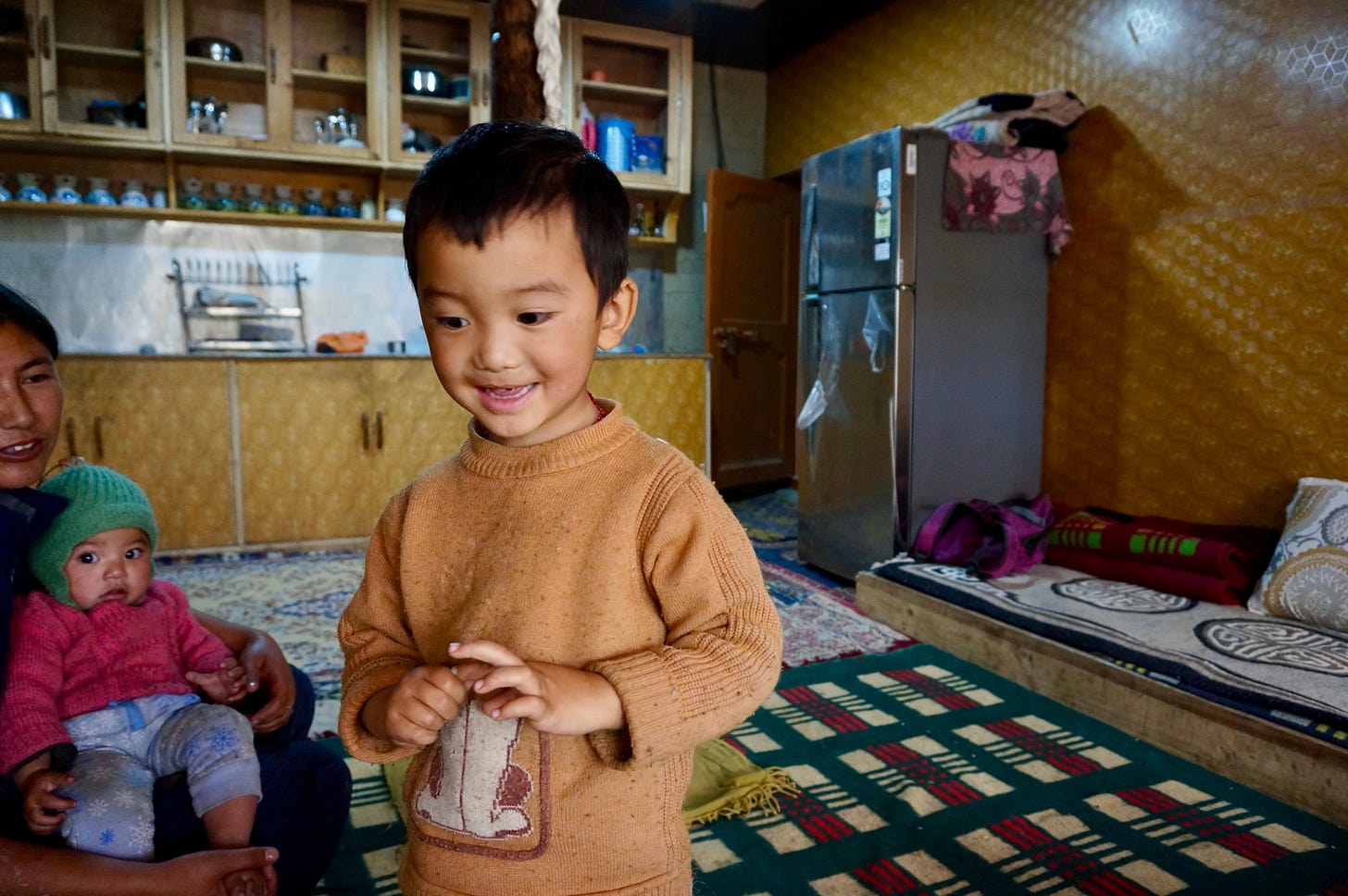
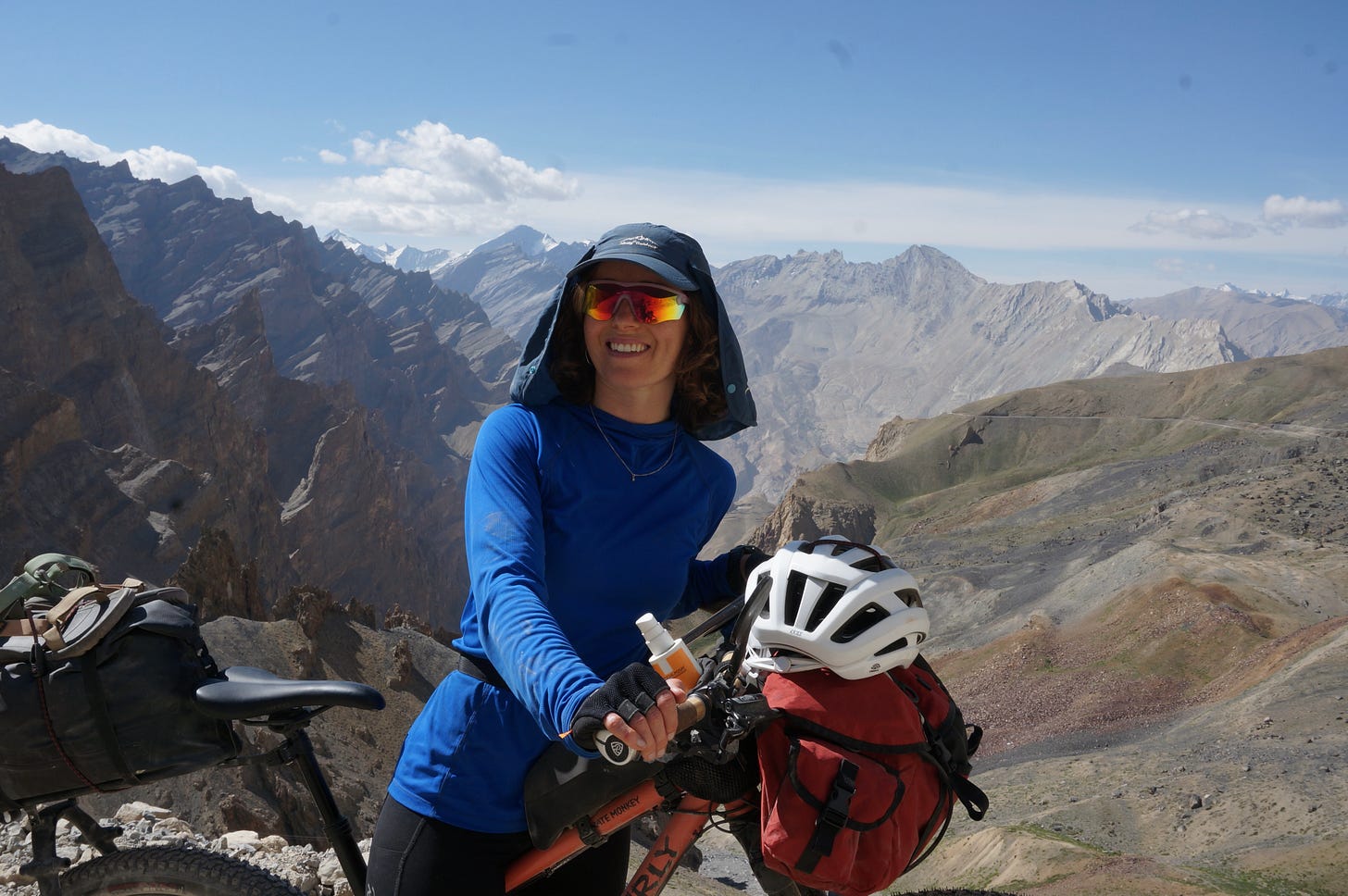

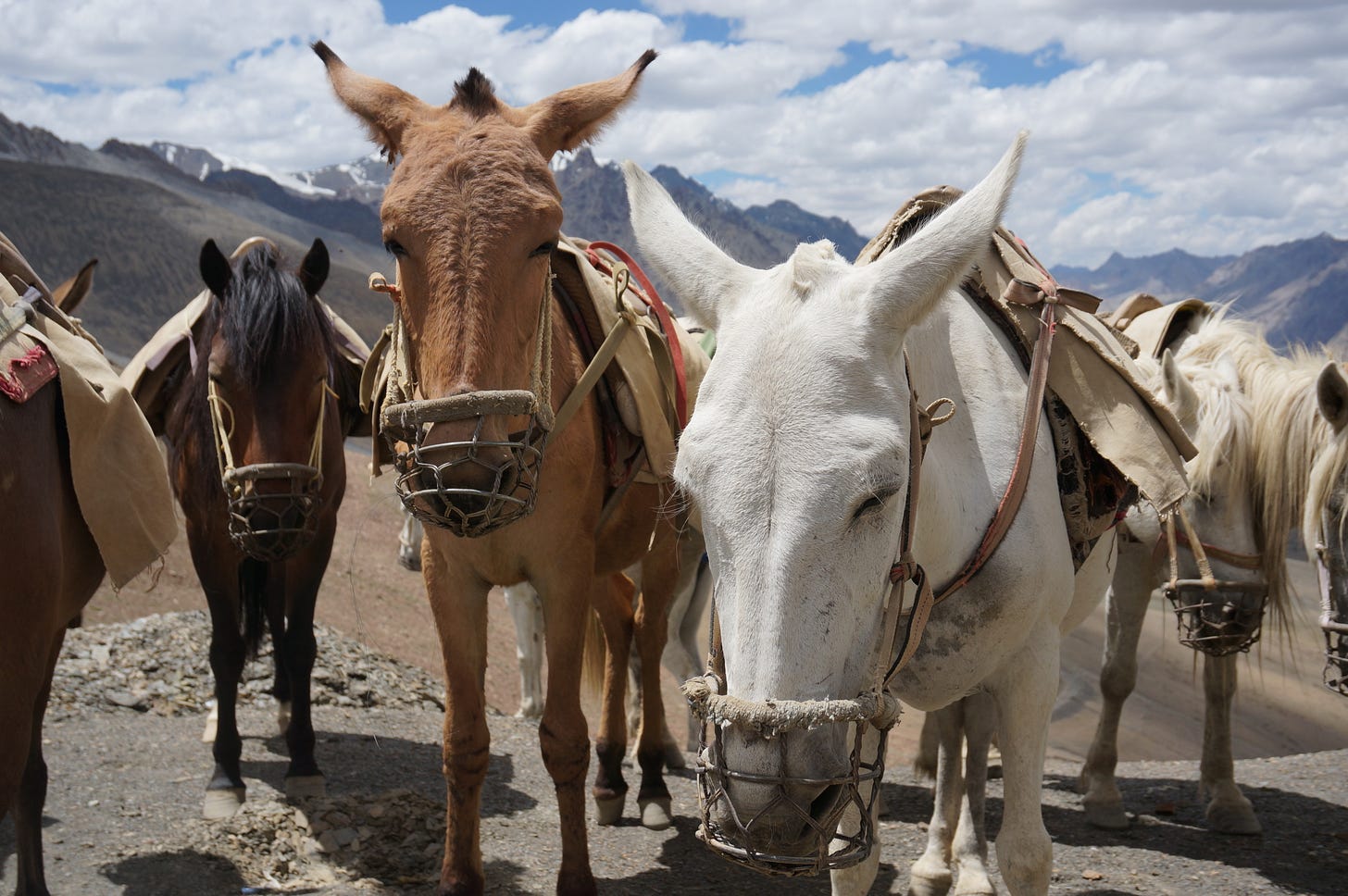
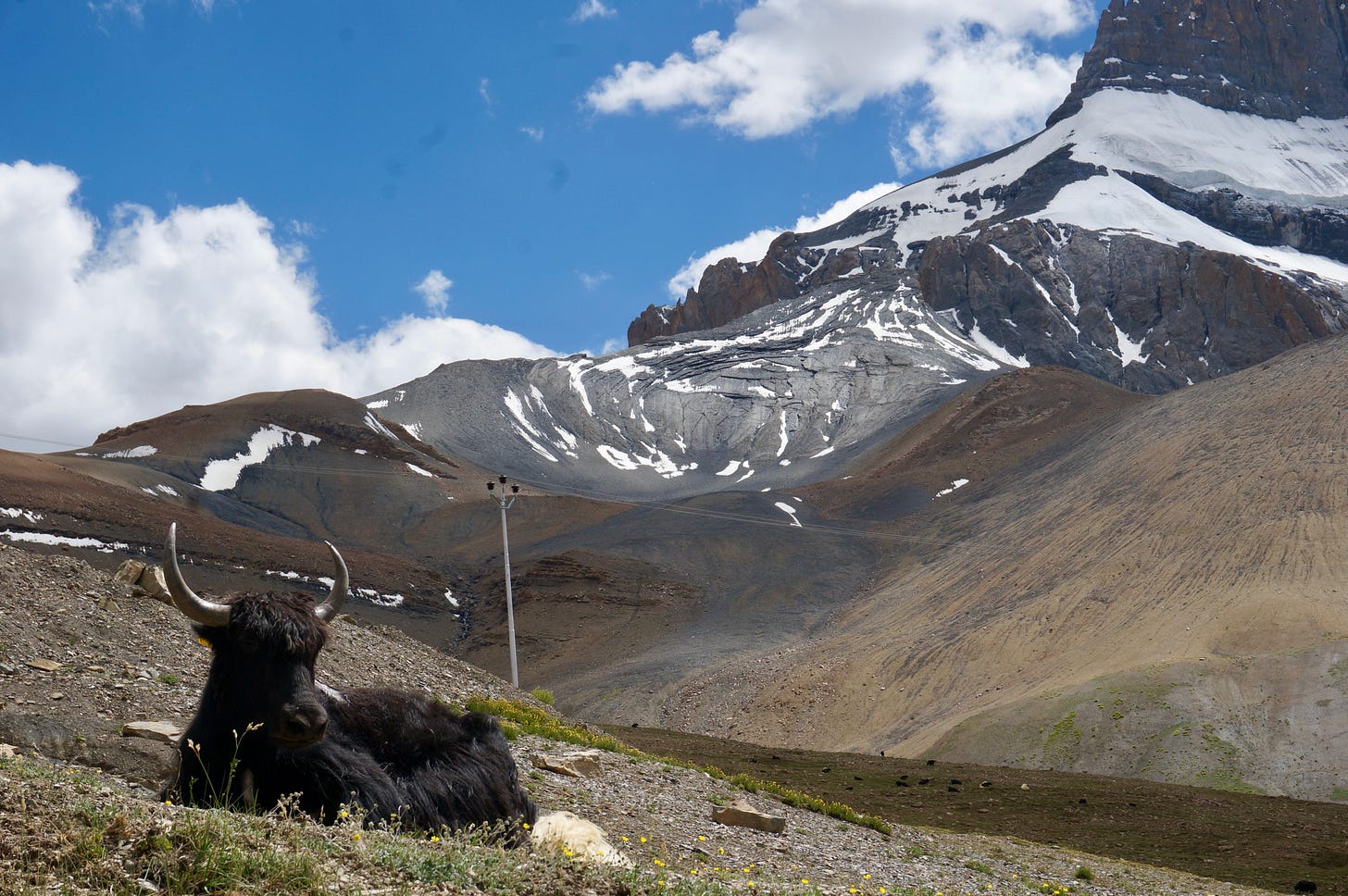
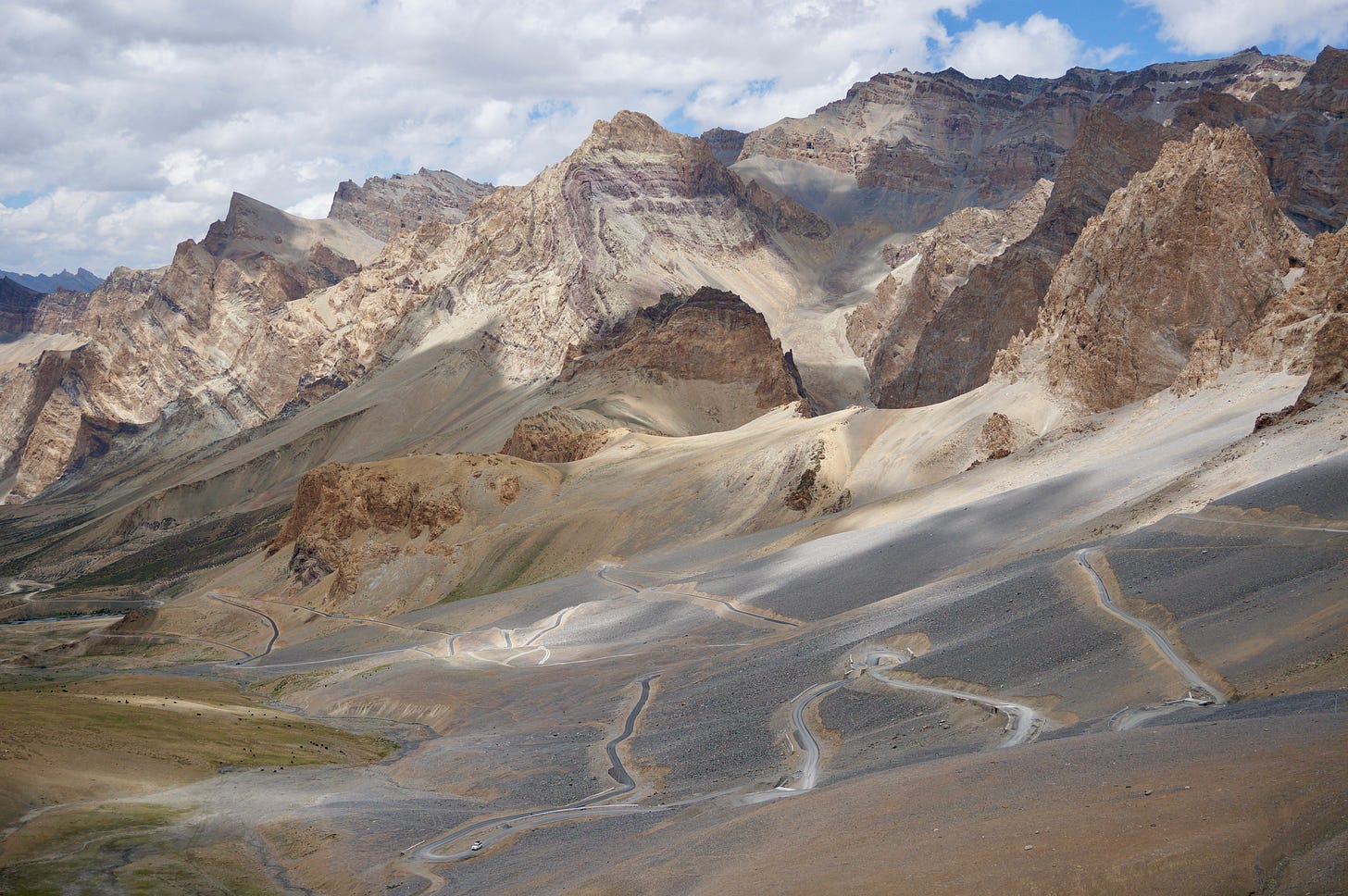
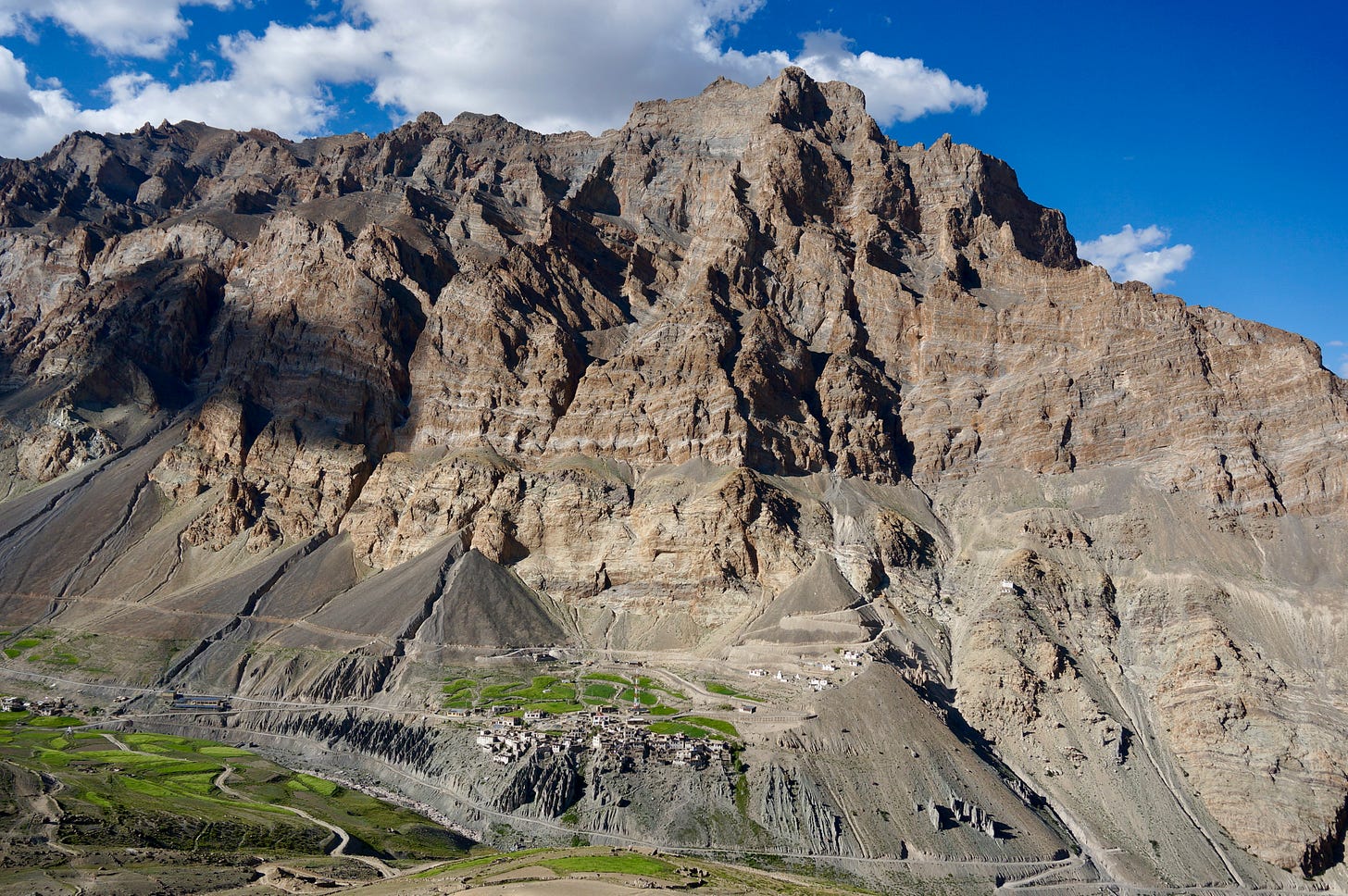
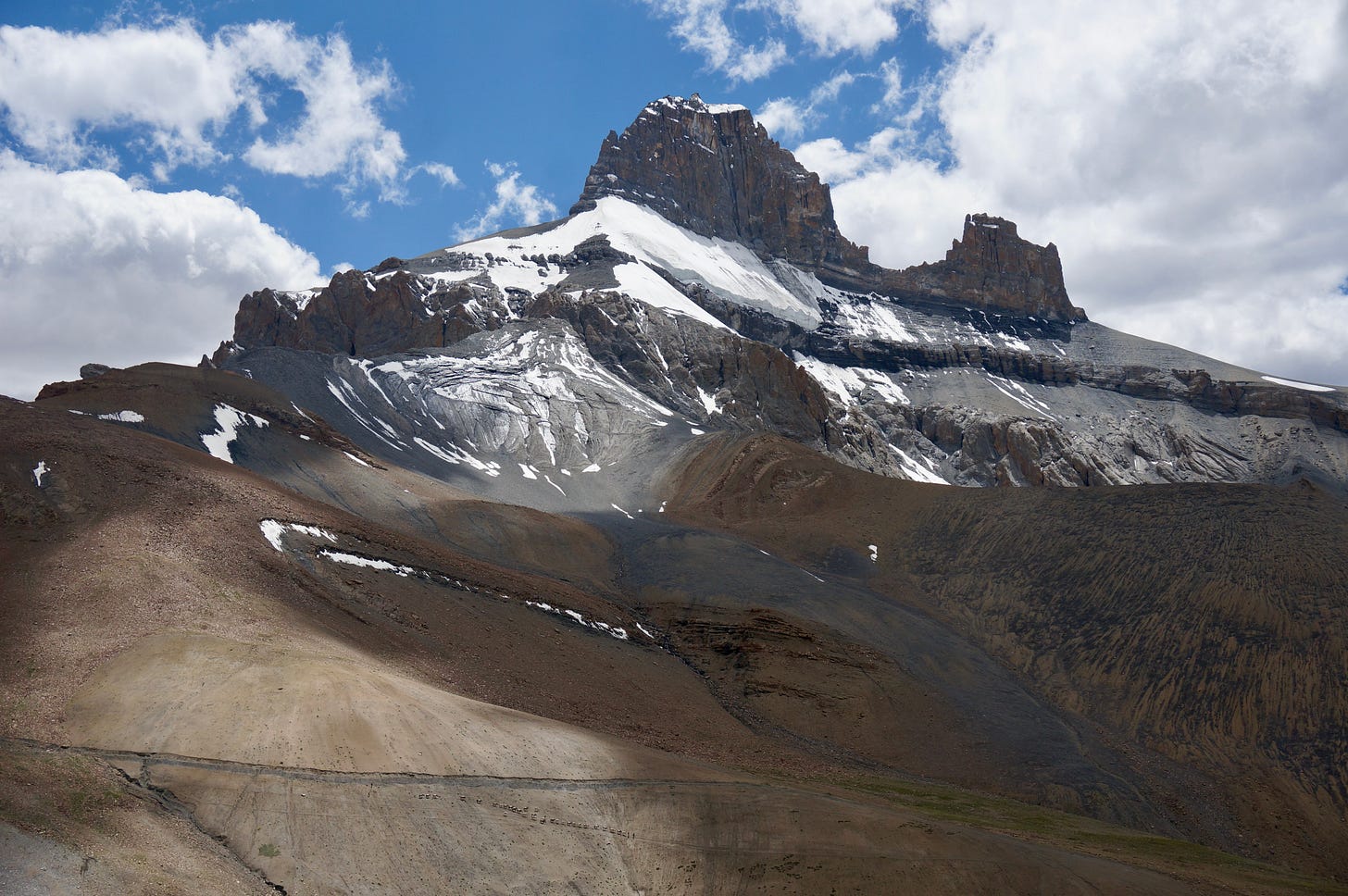
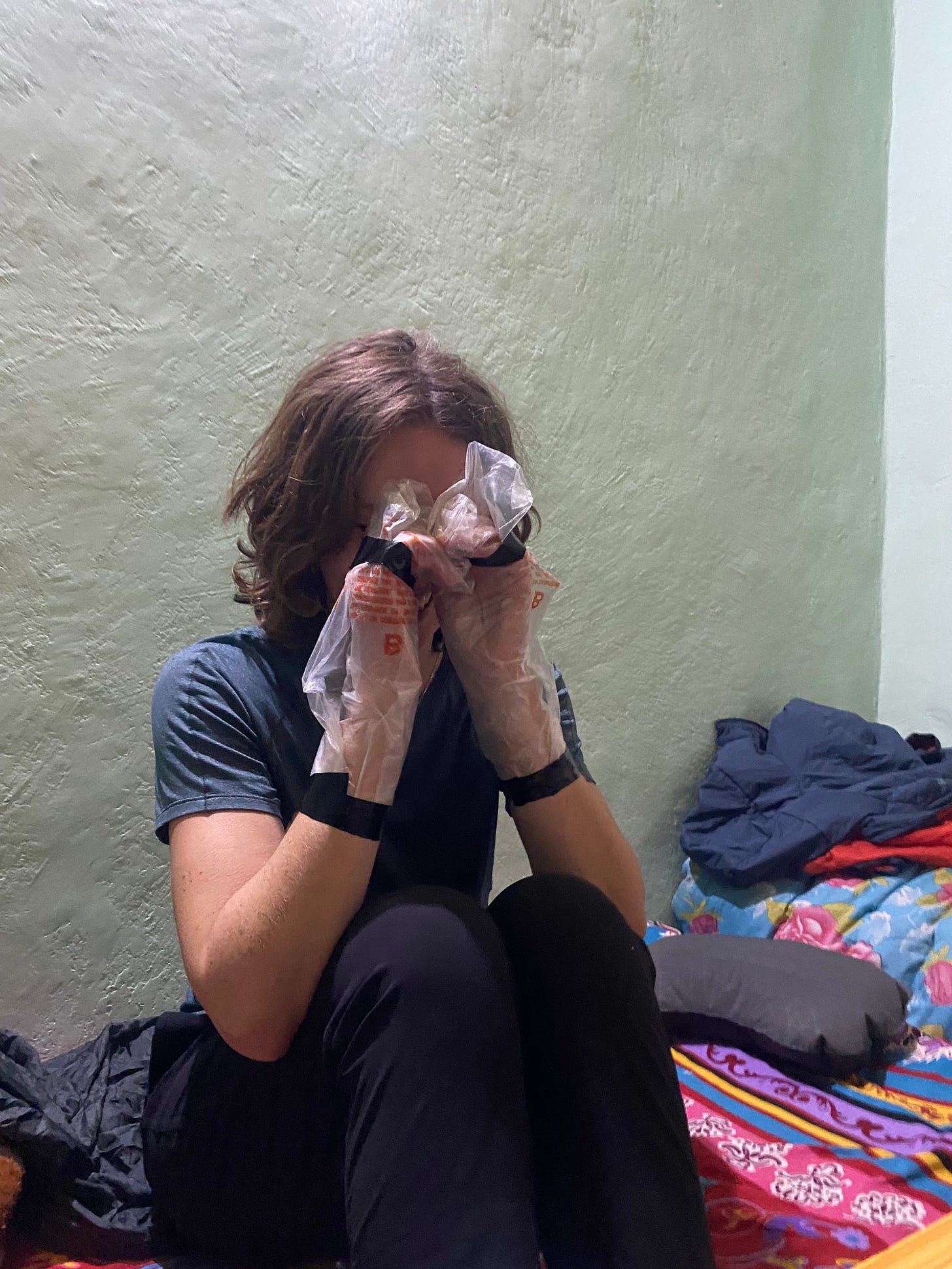
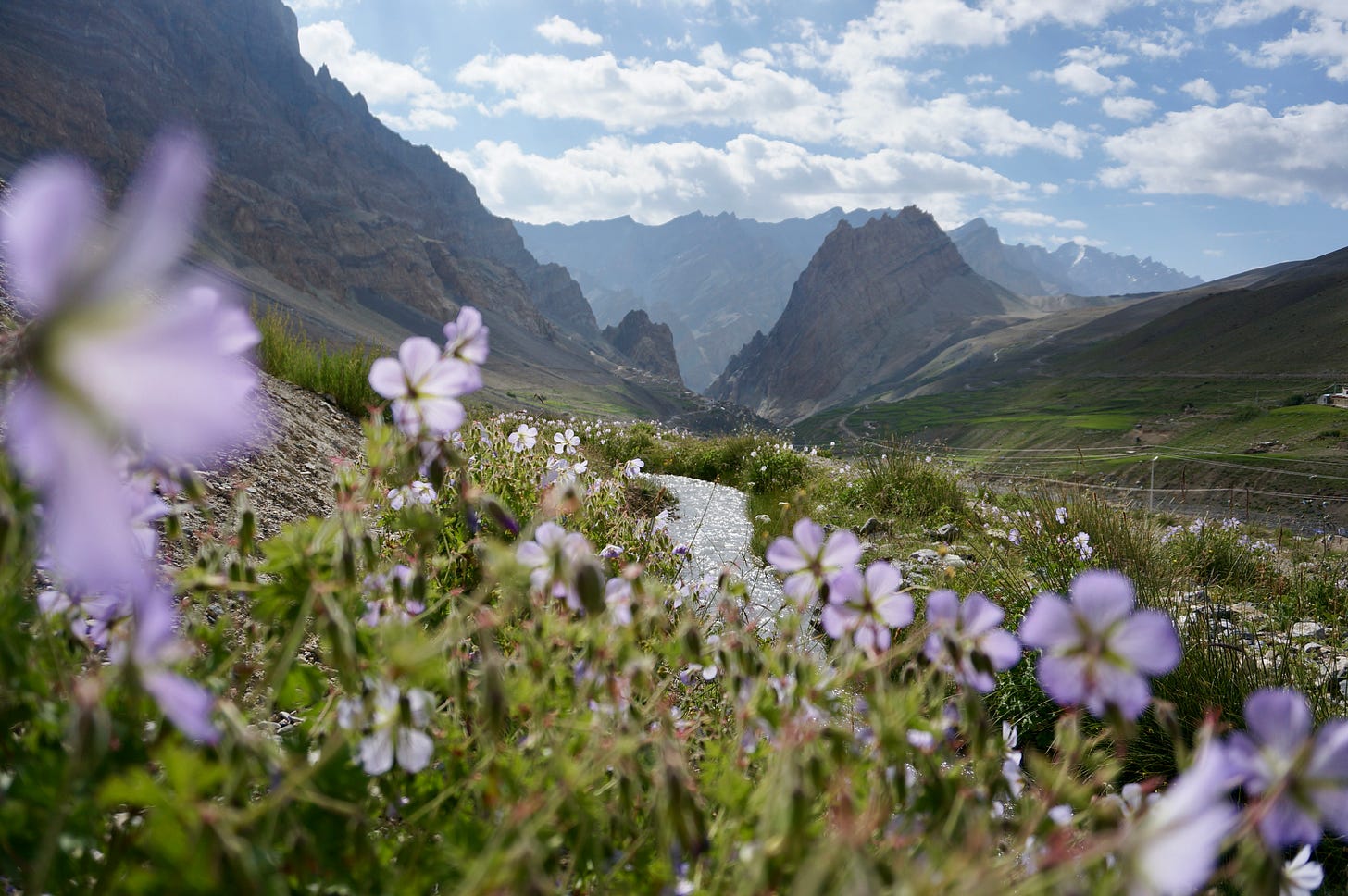
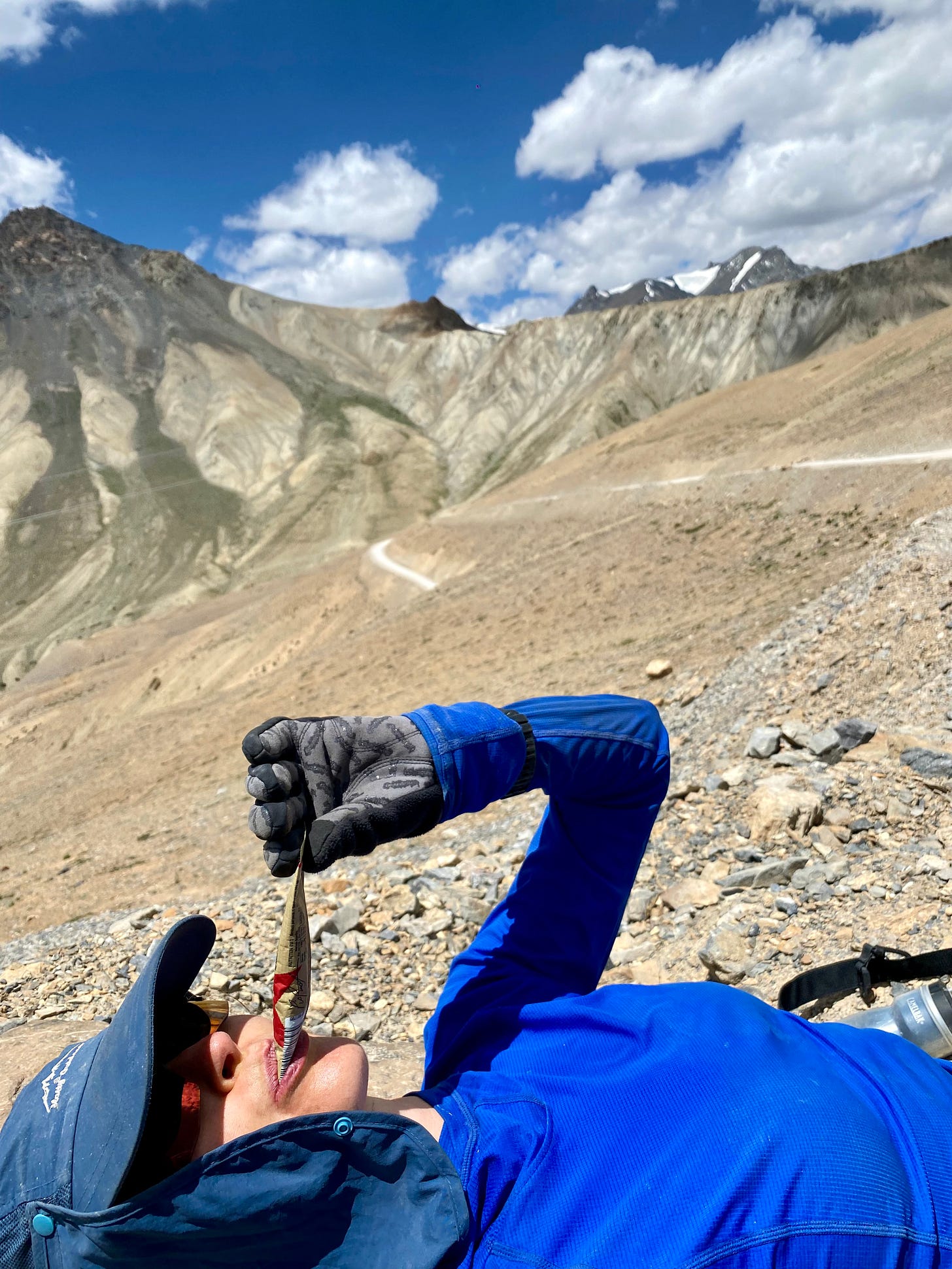
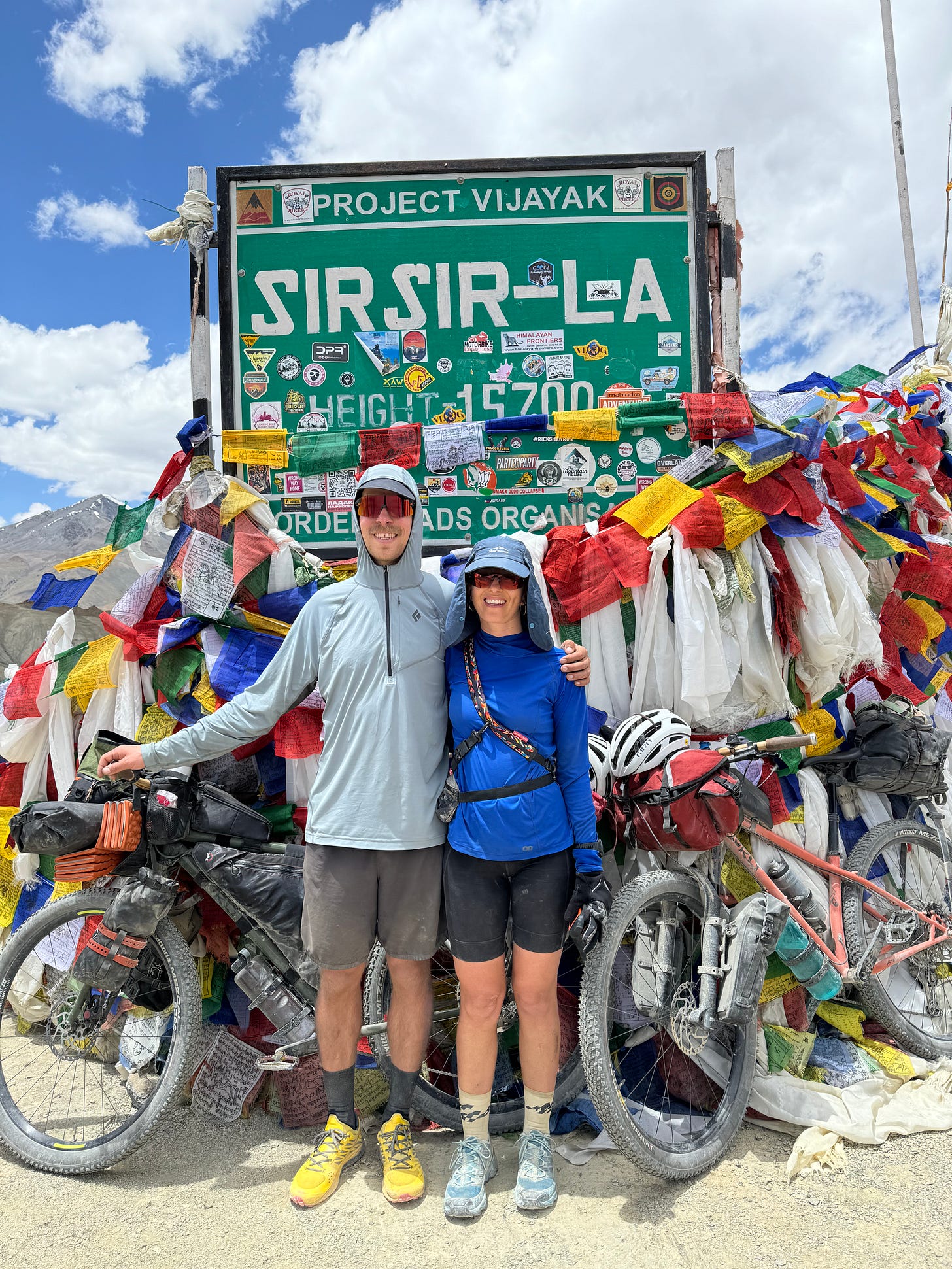
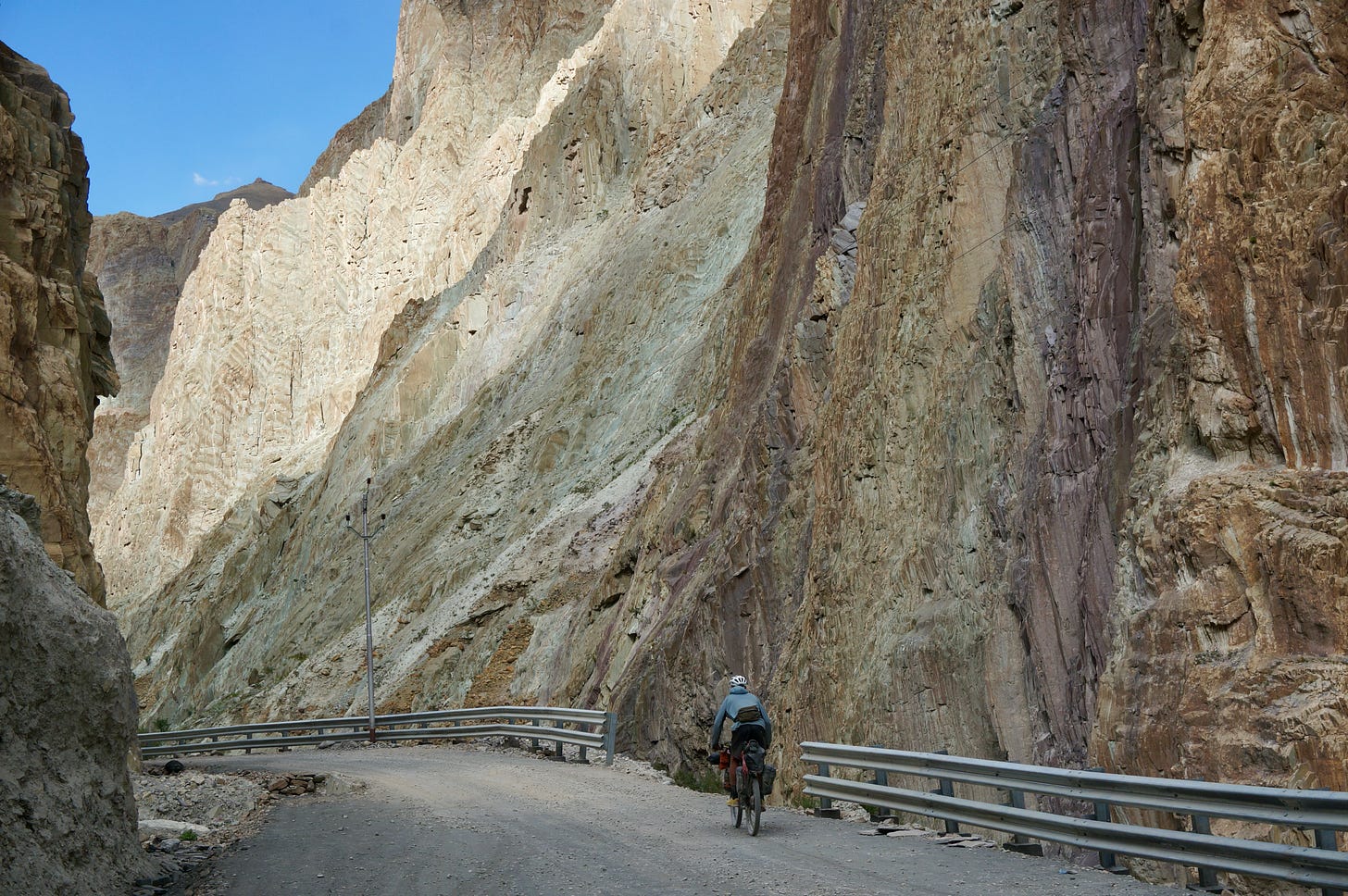
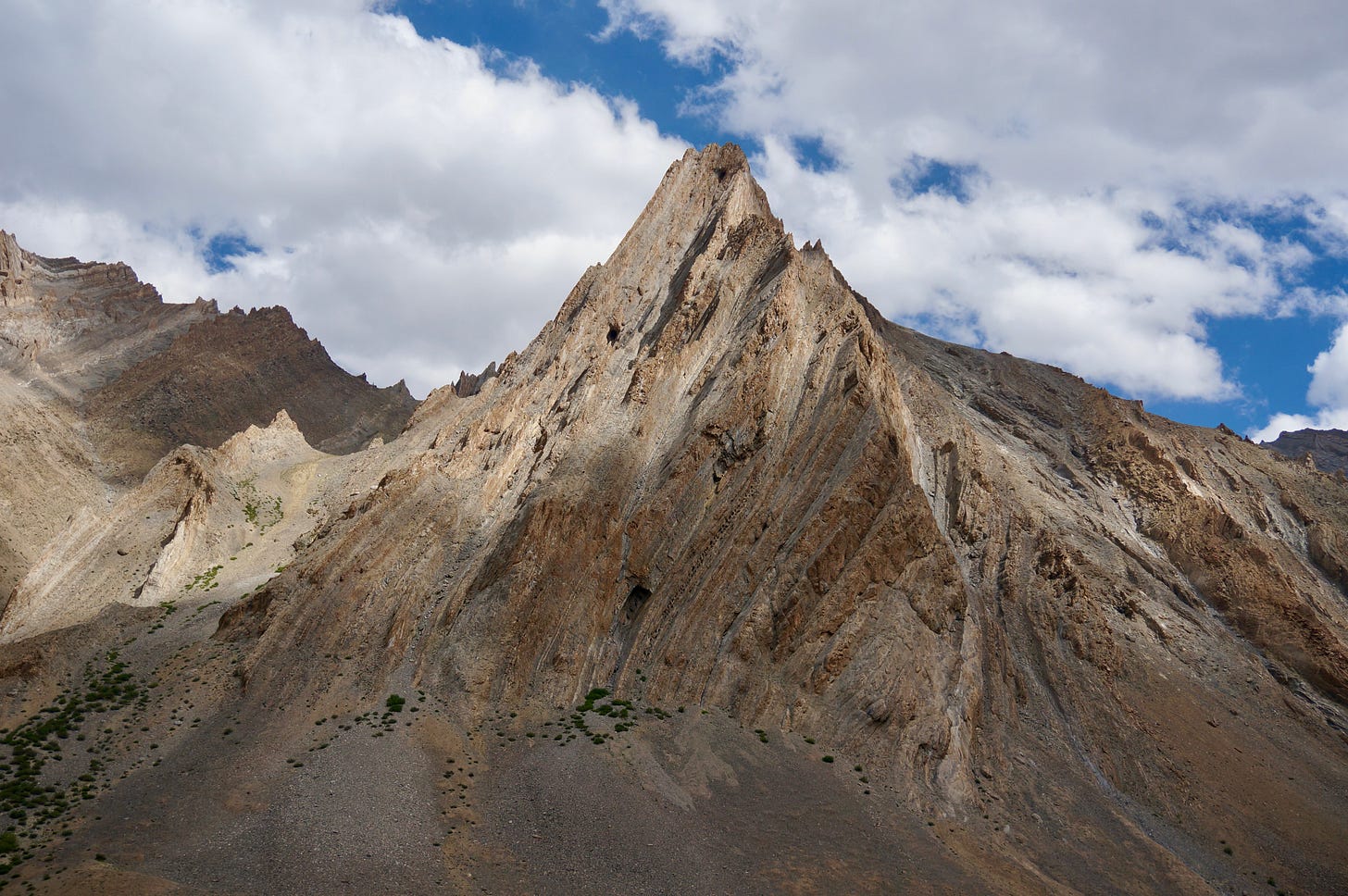
These photos are surreal. What an otherworldly place. Thanks for sharing these adventures.
A really great read Iso. And beautiful photos too!